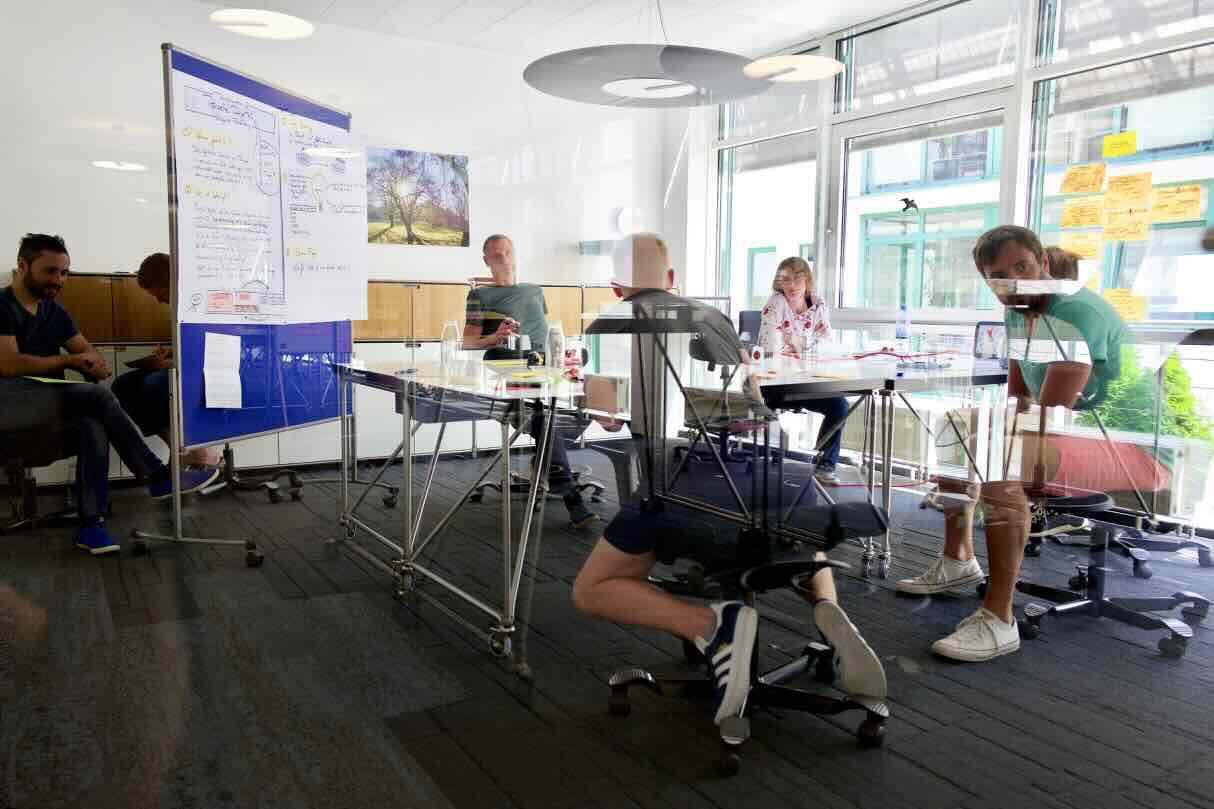What is peer case consultation?
Collegial case consultation is a systematic consultation in which colleagues discuss a case according to a predefined discussion structure and develop solutions together. It is good if the (advisory) group has the typical team size (7+/-2 people).
The roles in peer case consultation
Collegial case consultation has three roles:
- Case giver: He describes the case for which he is seeking advice. The case can be a question, a practical situation or a problem. The case giver provides information about the case and asks the key question to which they are looking for an answer.
- Advisors: The advisors are the colleagues who advise the client on the key issue in the case. The consultants do not have to have anything to do with the case, but it is helpful if they understand the content of the case (colleagues). A typical scenario for us is that agile coaches advise a colleague.
- Facilitator: This is the person who stays out of the consultation and facilitates the process. They ensure that the steps of the case consultation are understood by everyone and are adhered to. If necessary, they also support the process, e.g. by asking clarifying questions during the description of the case. They also ensure that the case giver and counselor treat each other with respect.
The roles are redefined for each case among the participants (colleagues). There is no external expert or moderator (except possibly at the beginning when a group is learning the procedure).
The procedure in collegial case consultation
A case consultation takes about three quarters of an hour to a whole hour. It is divided into the following six steps:
- The case giver describes the situation/case/scenario/problem and formulates his/her open question (key question) - 5 min.
- The consultant colleagues ask comprehension questions - 10 min.
- Form hypotheses - 15 min
- The consultants make assumptions and interpretations. They put themselves in the position of those involved (How would they feel? How would they act?).
- During this step, the case giver turns around (or goes behind a pin board or similar) and listens. Typically, he also takes notes.
- Sort out hypotheses - 5 min
- The client can express themselves in order to focus on which hypotheses the consultants are basing their solution finding on. The client does this in an appreciative manner and without commenting.
- Develop ideas for solutions - 15 min
- The consultants develop solution ideas and alternative courses of action for the key issue based on the "confirmed" hypotheses.
- During this step, the case handler turns around again, listens and takes notes.
- Reflect on solution ideas - 5 min
- The case giver reflects on the "outcome" of the consultation (e.g. what was discussed, what was not) and describes the concrete steps they will take next.
Beware: think of all the solutions in the hypothesis part. Ignore the hypotheses in the solution section.
There are different variants of the procedure (see e.g. the description at Wikipedia) and no standard. Find a way that works for you, inspect and improve a little. For example, you can do a short retrospective on the process at the end.
The result of a collegial case consultation
The result of the case consultation is a series of answers (options) to the key question posed by the client. In most cases, the case giver leaves the case consultation with a whole range of ideas. However, the same also applies to the consultant colleagues: even if it is not their case, the case discussions build up solution competence for their own future situations.
References
- Collegial case consultation is also part of the "Wise Crowds" program. Liberating Structures (here the description in German or in English).
- There is also a German entry in Wikipedia.


Write a comment